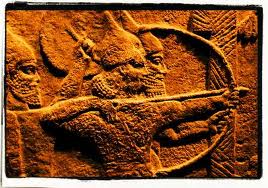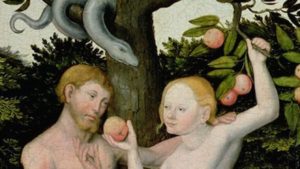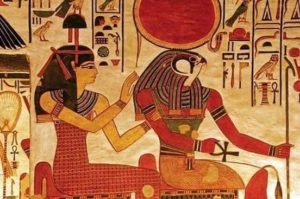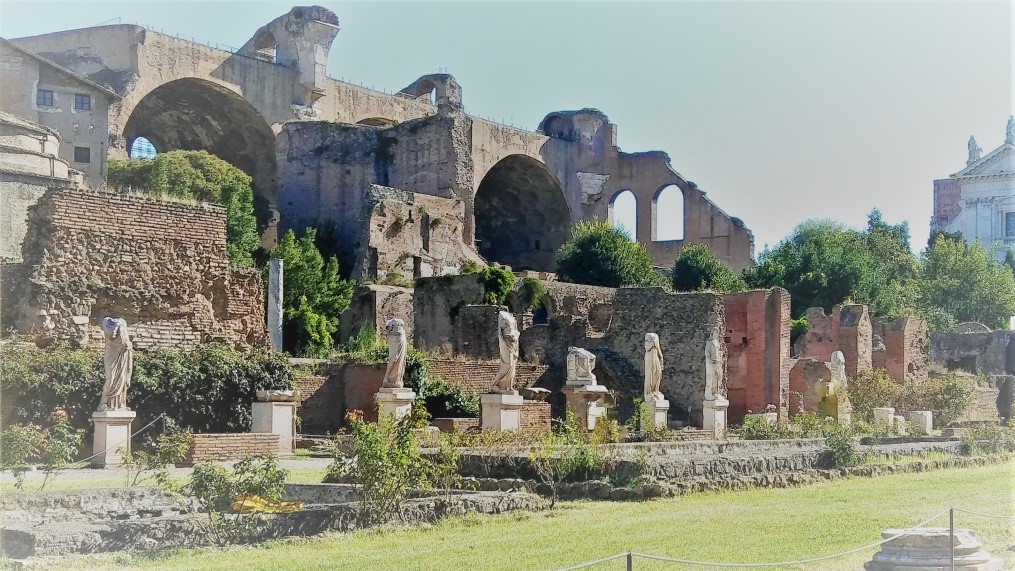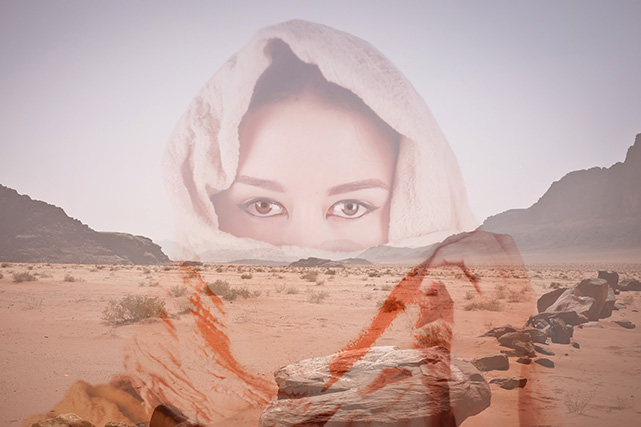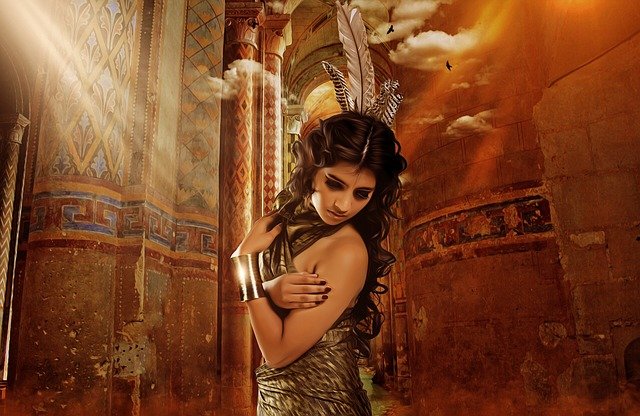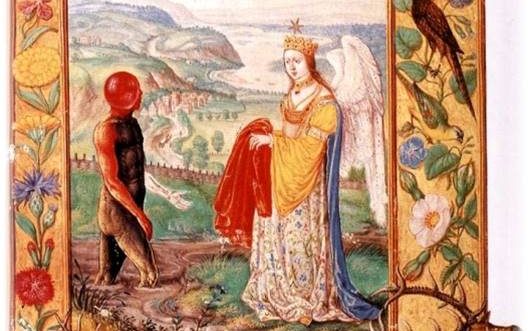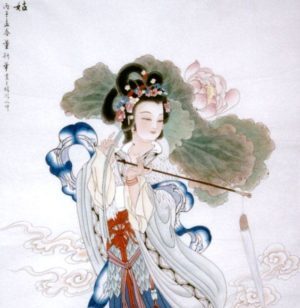“History is written by the winners.” This quote is often attributed to Winston Churchill, but it is not certain that it originated with him. In either case, the “winners” are those who conquered the “losers” and established themselves as the dominant class in the societies they overcame. Most of us do not have to think long to figure out who this is in most societies today.
The truth of this matter is that since the Aryan tribes from somewhere northwest of the Eurasian landmass rode their newly domesticated horses into the Indian and Near Eastern cradles of civilization, wielding their newly forged iron weapons and imposing their priesthood upon the peaceful, egalitarian, goddess centered cultures, the “winners” and writers of history have been members of a fiercely patriarchal power structure.
Consequently, the history that has been handed down to our generation “begins” in these centuries between 5500 and 1500 BCE, and blatantly ignores the tens of thousands of years of goddess-centered cultures that preceded it. Any mention of pre-biblical human events are usually slighted in texts as “pre-history,” though it is clear that the patriarchal priesthood systems “borrowed” much of their religious ritual and god-given life-power from the ancient goddess traditions. (More about this in an upcoming blog.)
Because a majority of the major world religions are based in scriptures that were written during and after the times that patriarchal cultures came into power, we can safely conclude that most of the history we read today was almost exclusively written by members of an elite male social class. What little we read about women is focused on how they served the men in their communities – most often in terms of their sexual usefulness to men or their roles in birthing males who were destined to become prophets or gods.
For example, when I was researching the world’s scriptural traditions for evidence of women’s roles in sacred dreaming while writing Dreaming ~ The Sacred Art [link], it became evident that women’s powers as dreamers and dream interpreters were held with high regard, even in societies where women have relatively low status. However, the cases in which these dream powers were recorded are centered on how they served the male ruling class.
In all, we have inherited little if any reliable accounts of women’s real life stories and experiences from these formative years of contemporary cultures. Because of this, we are forced to try to piece together women’s cultural and religious heritage from what little information we have been provided with, and this is why historical fiction is so crucial.
Feminist theologians have developed a marvelous means of recovering women’s past that is based on the Hebrew literary tradition of Midrash. A Midrash is a means of stepping into a scriptural story and recreating it from the perspective of a character that is not portrayed prominently and, within the process, really trying to imagine what their experiences in that particular scene was really like. From this we can infer more about what it was like to be a women in their perspective cultures.
One of my favorite examples of this is Phyllis Tribles’ incredible essay, “Eve and Adam: Genesis 2-3 Reread.” Trible so astutely noted that while the story of Adam and Eve has been used to legitimate male supremacy and female subordination, a closer look reveals that Eve is actually shown to be the first real mover and shaker of the human race. In choosing to accept the fruit from the serpent in the Garden of Eden, Eve exercised creative thought, intelligence, and self motivation. Trible concludes, “The initiative and decision are hers alone. There is no consultation with her husband. She seeks neither his advice nor his permission. She acts independently. By contrast, the man is a silent, passive, and bland recipient” (Eve and Adam, 79).
Within the ensuing years of teaching classes on the Hebrew and Christian Testaments, I began to realize that Eve’s significance as an initiator of major historical events was paralleled by other women throughout the books of the Bible. Later, still inspecting historical texts through a midrash – historical fiction lens while instructing classes on the History of Christianity, I was amazed to discover how many other significant events “performed” by male Christian heroic figures that changed the course of Christian history and established a new identity for religious culture had actually been provocated by a woman. Indeed, many of the pivotal events, schools of thought, and doctrinal developments of the Hebrew and Christian traditions were initiated by actions and positions taken by women, yet the significance of women’s cultural, historical, and theological ingenuity has largely gone unrecognized and unappreciated.
I wrote my dissertation on this phenomenon, and in the years since then, I have come to realize that throughout the ancient patriarchal usurpation of ancient goddess life-perpetuating powers, the pattern of female initiation of male divine action is evident in the world’s mythology. It is the Hindu goddess Kali that awakens and enlivens Shiva to perform his dance of life and death. It is the Egyptian goddess Hathor, whose energy and light powers the Sun god, Re through the sky and through his life stages and changes. The list goes on…(More about this in another blog as well.)
My method of researching and writing women’s historical fiction is based upon this model, but also incorporates what contemporary anthropologists and historians are learning from their enhanced methods of research.
In the case of my latest novel, Music, I was fortunate to find the actual Passion of St. Cecilia in the archives of the Library of the University of Notre Dame. Then I was able to compare the phantasmagorical accounts of her life and virgin martyrdom to what anthropologists were learning about family life and structure at that time by studying ancient Roman sarcophagi. In a class I took with Mary Rose D’Angelo, who did research in this field, I learned that girls were often married to older widowers as soon as they started their monthly cycles and were able to provide male progeny. This really shed some interesting light on Cecilia’s wedding scene within her Passion account.
These discoveries lead to others until a real profile of what women’s lives were probably like within these cultures can be held up to what the historical “winners” have chosen to tell us about them. This is challenging, but extremely gratifying detective work.
It is essential for women of today and of the future to find and hear the voices of women from the past that have been silenced. They gave birth to us and were far more influential in the development of humanity than they have been given credit for. All that aside, it makes for great reading!
Love, Abundance, and Joy,
Lori
“Eve and Adam: Genesis 2-3 Reread. (1979).” In Womanspirit Rising: A Feminist Reader in Religion, edited by Carol Christ and Judith Plaskow, 74-83. San Francisco: Harper and Row.

